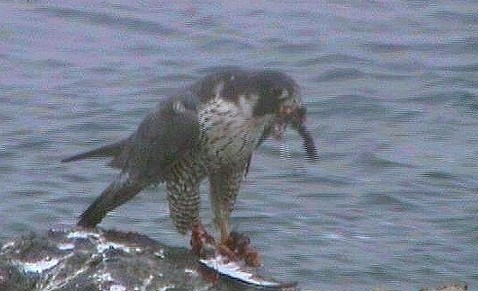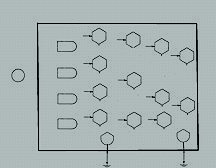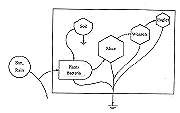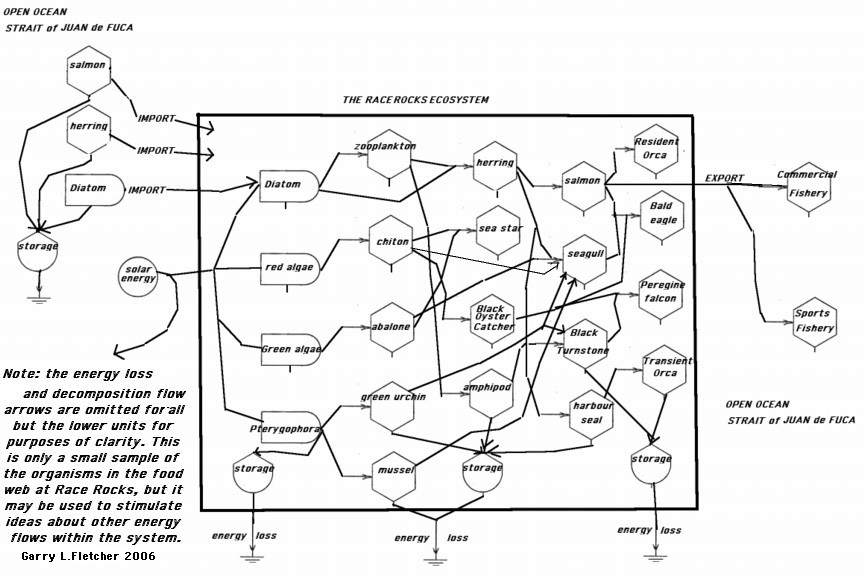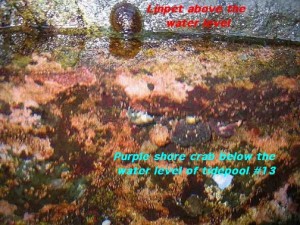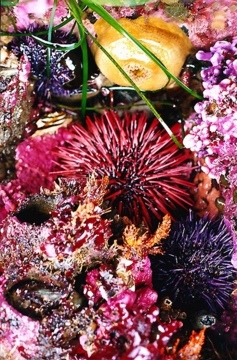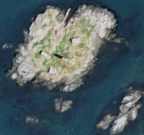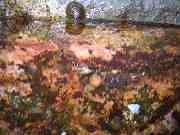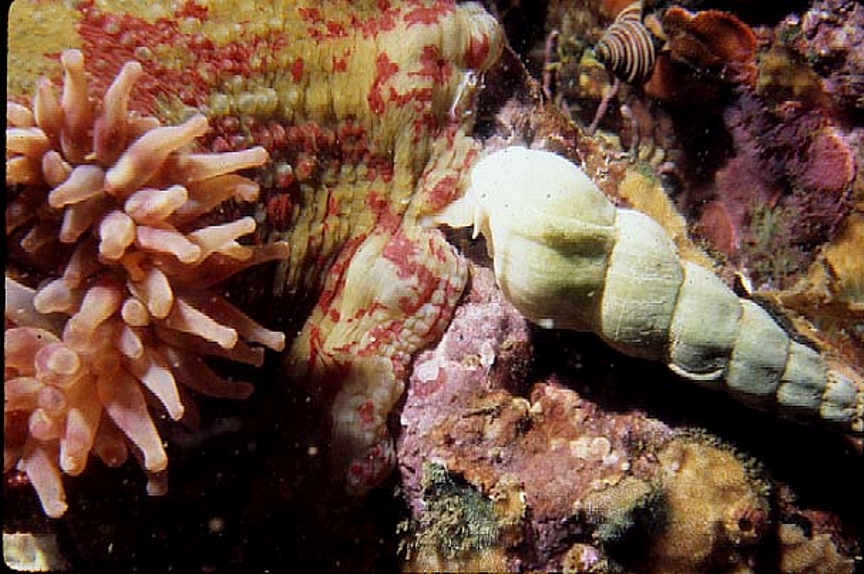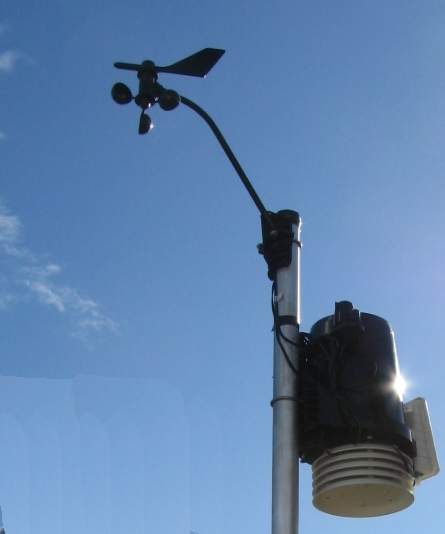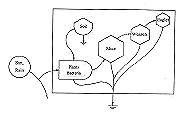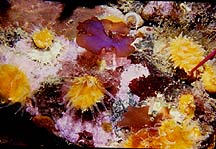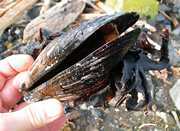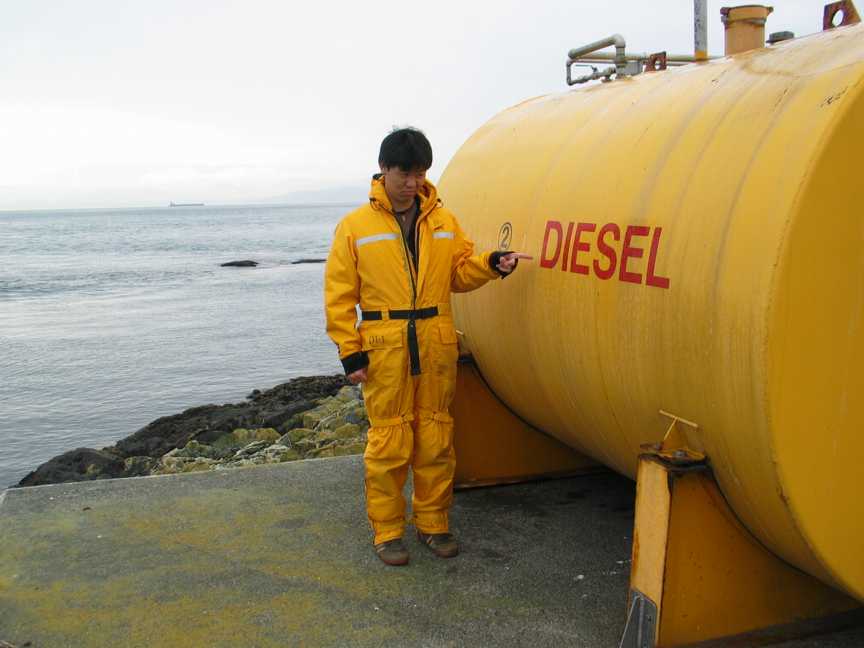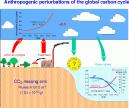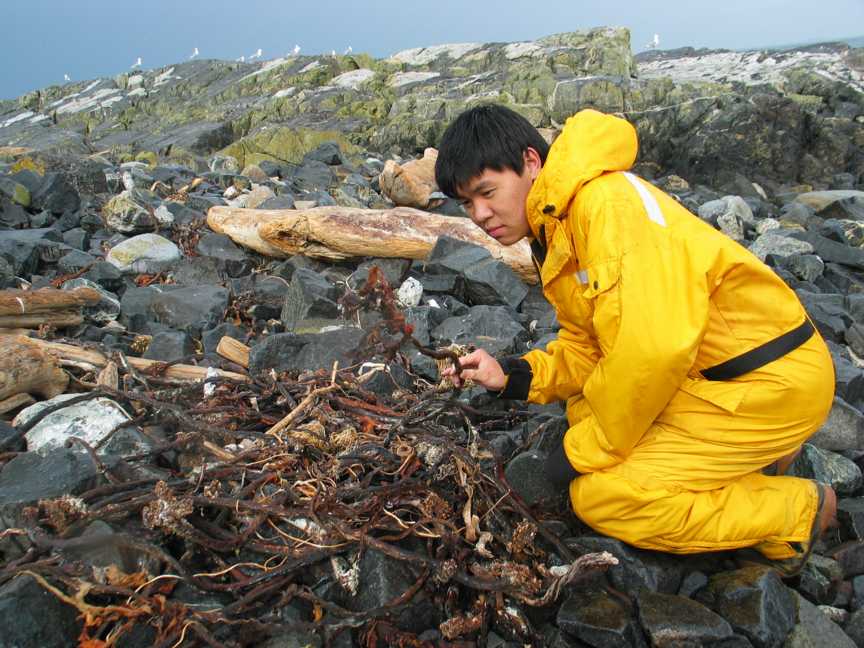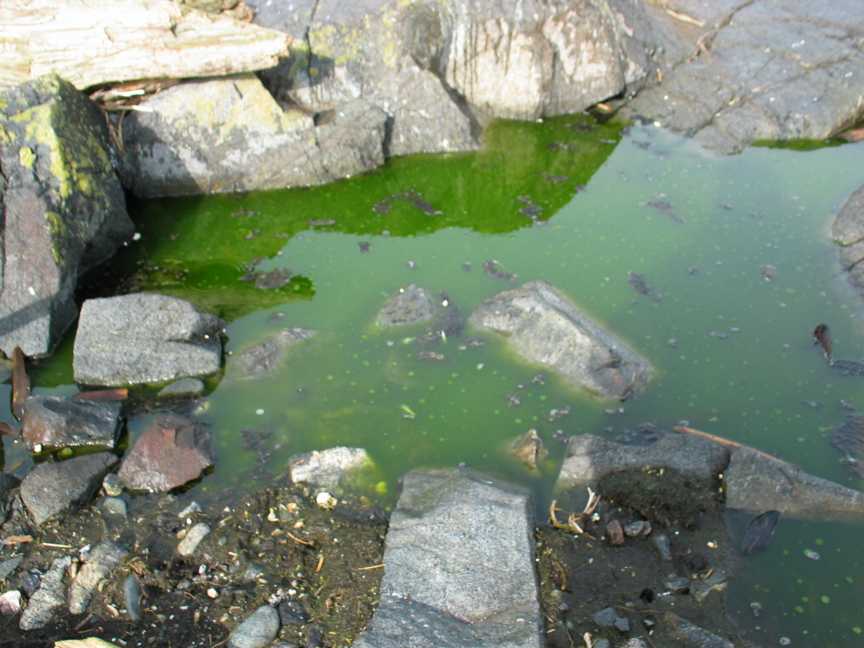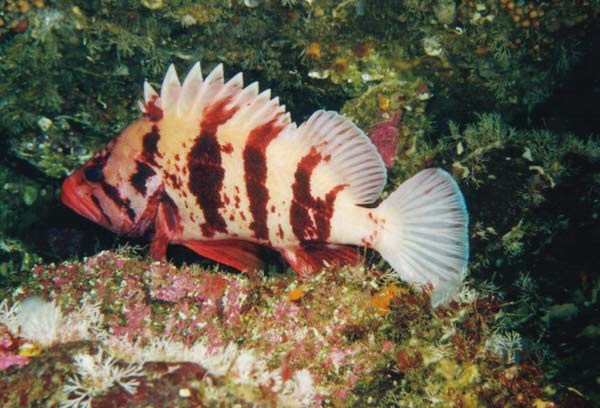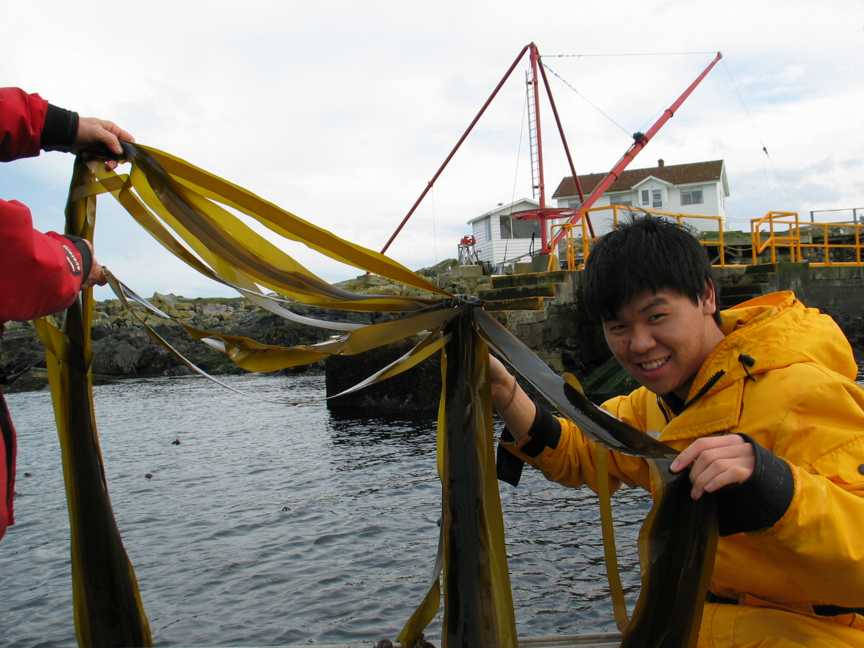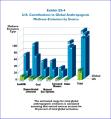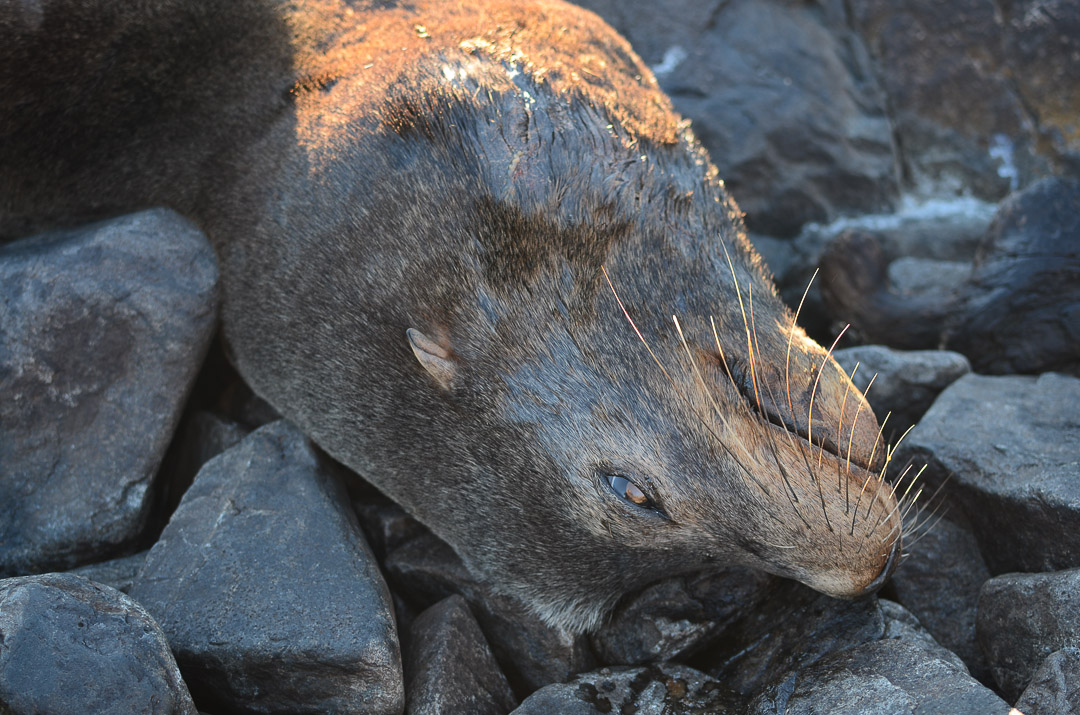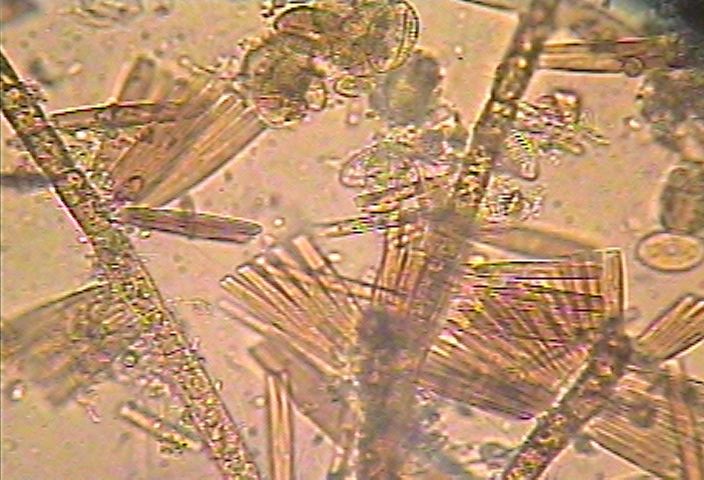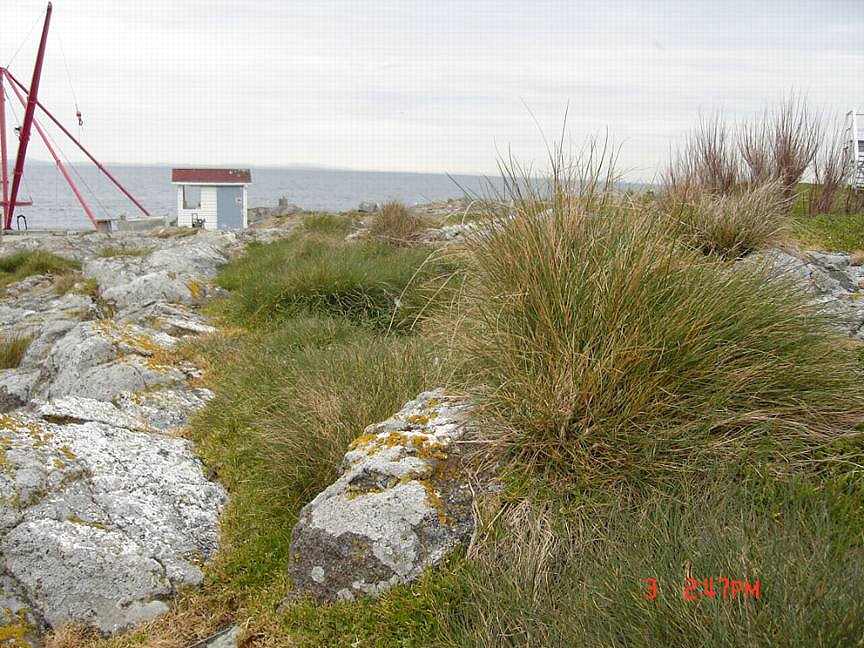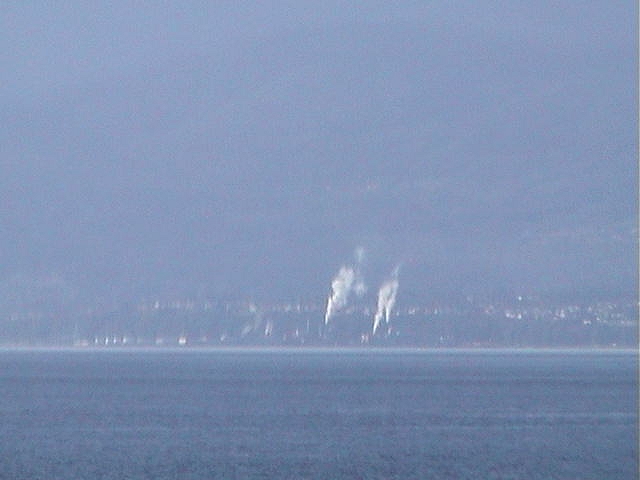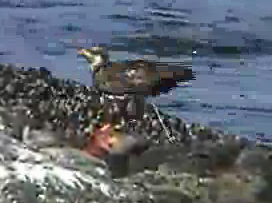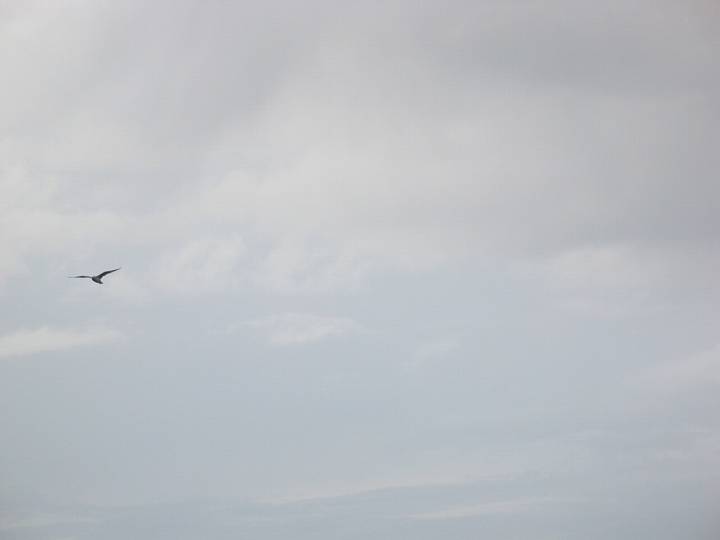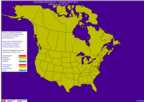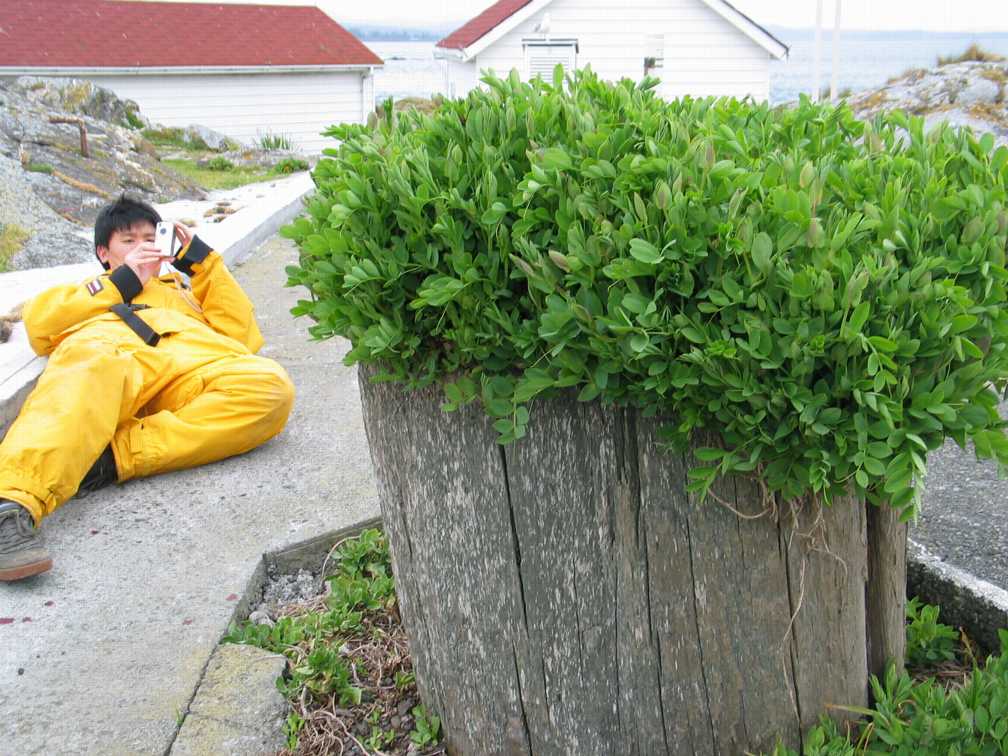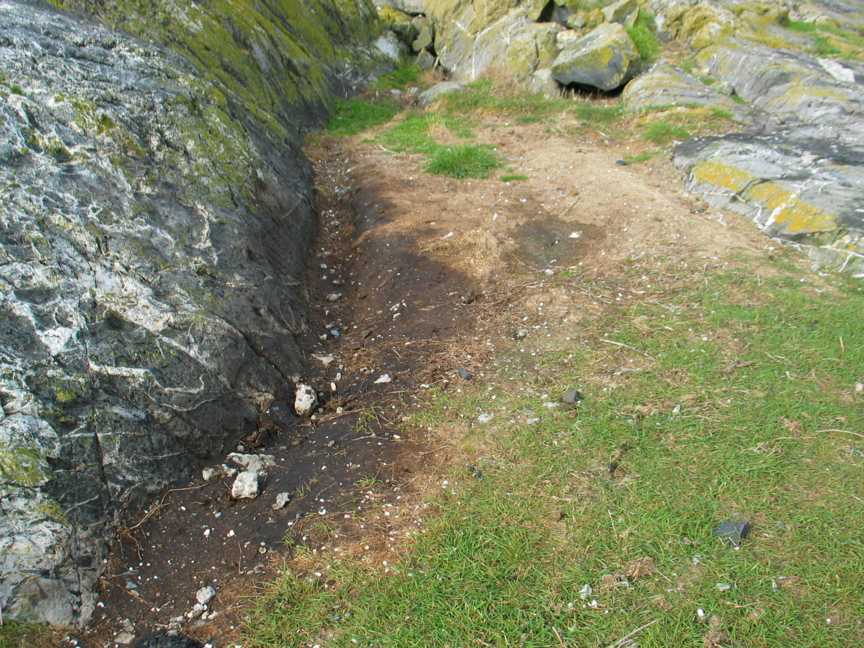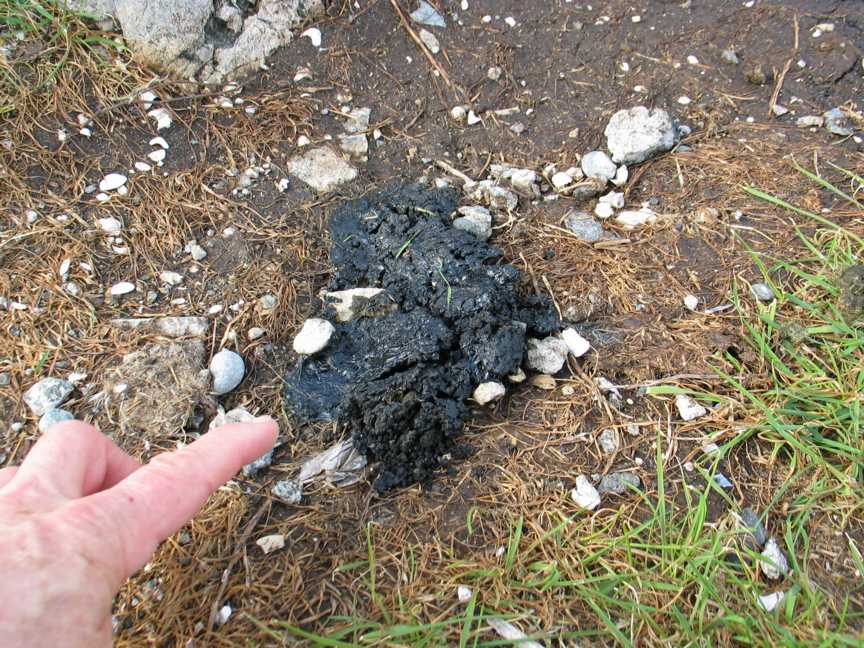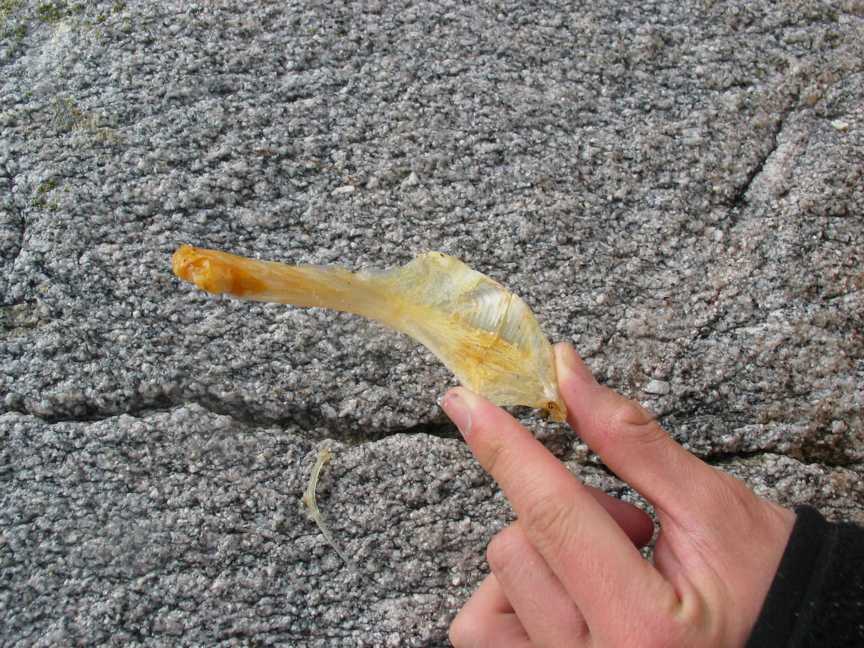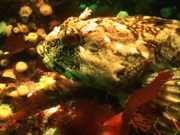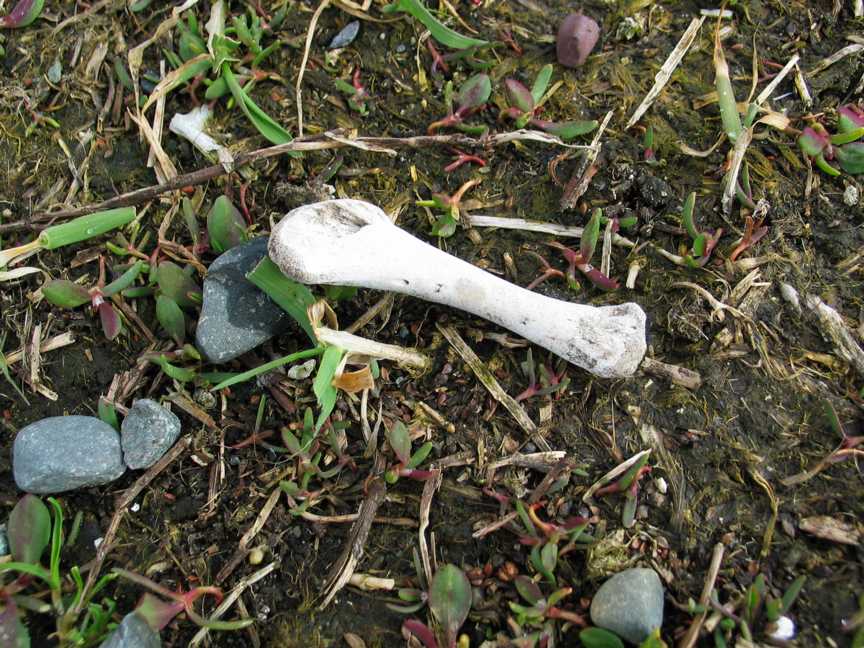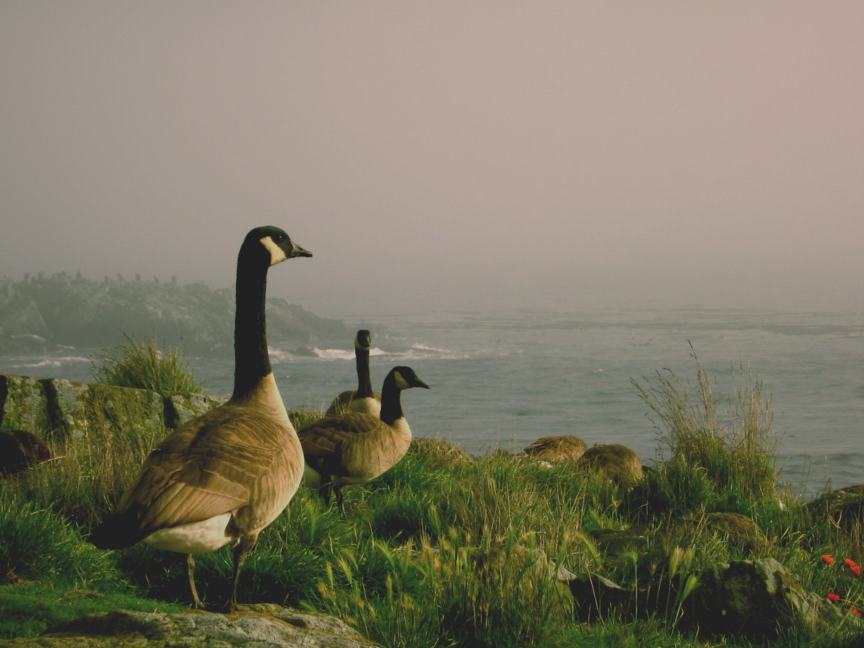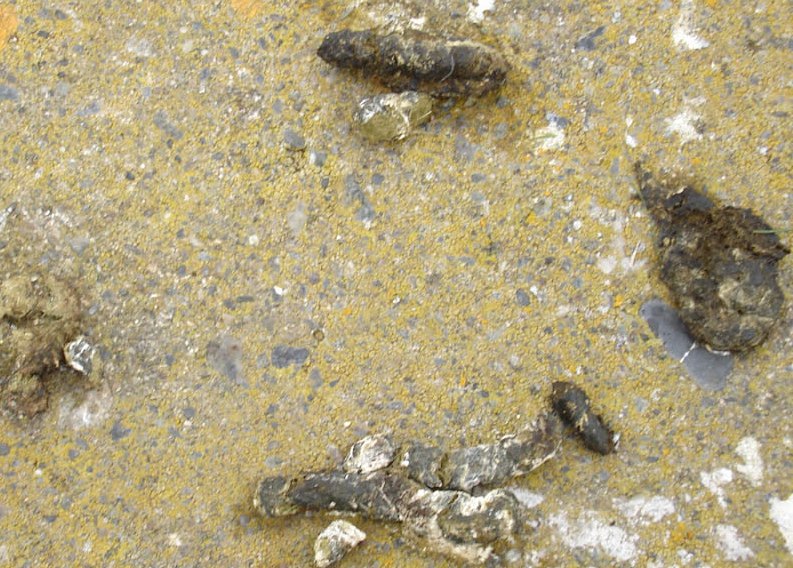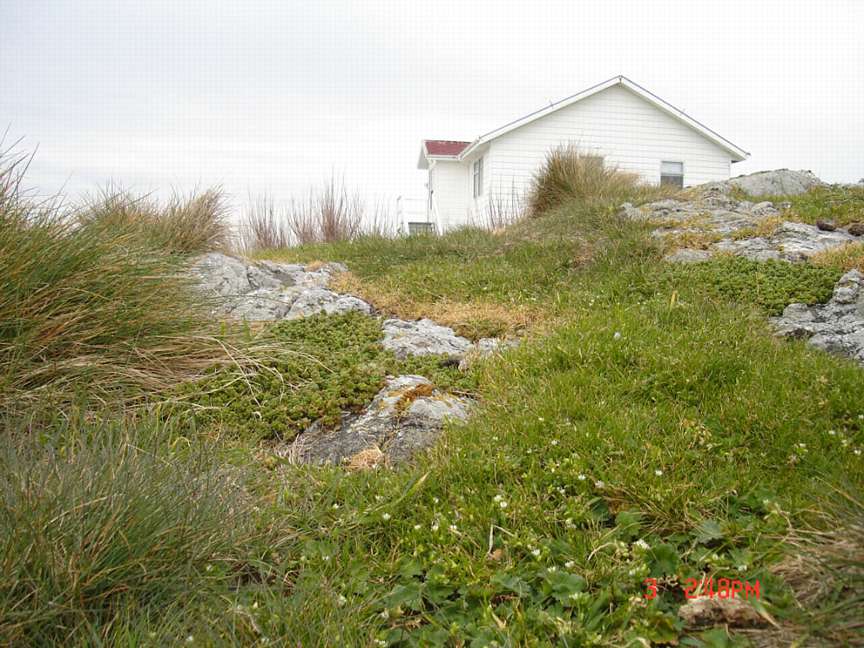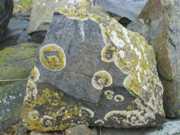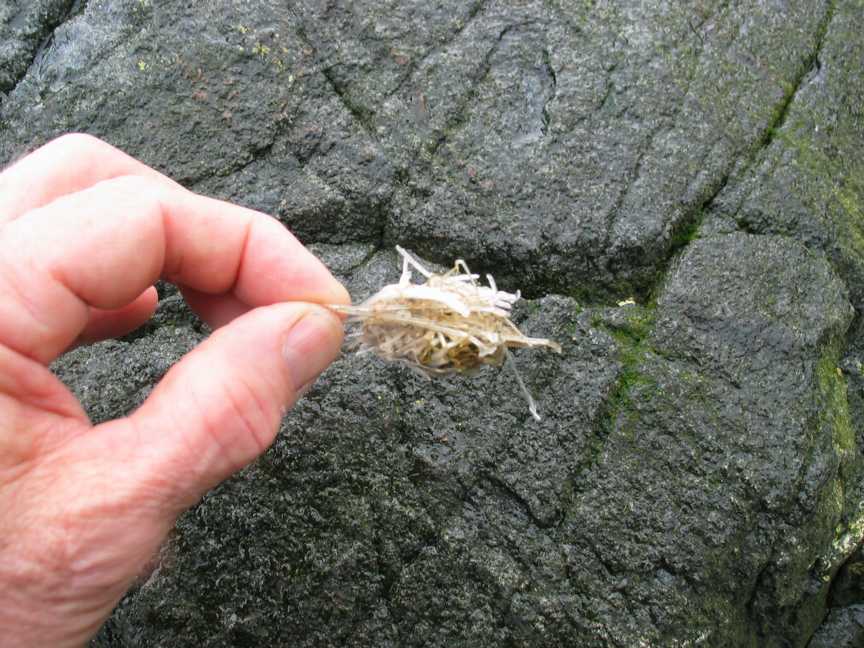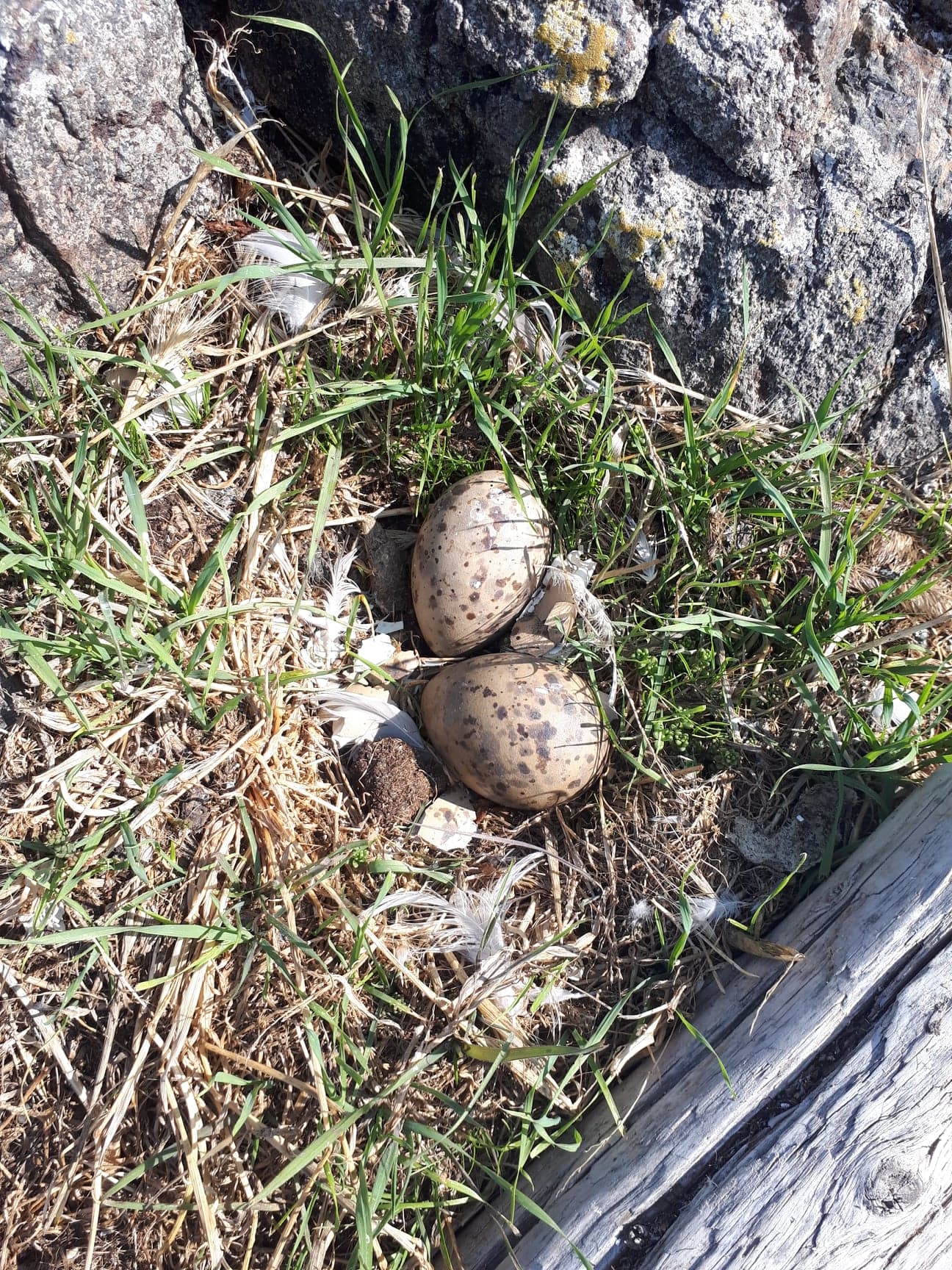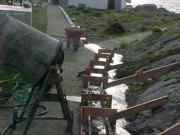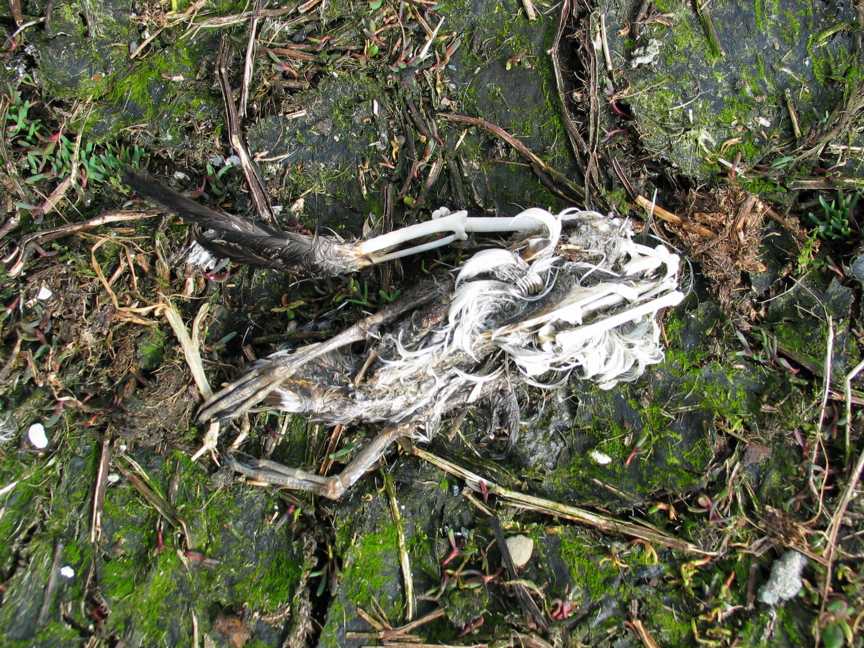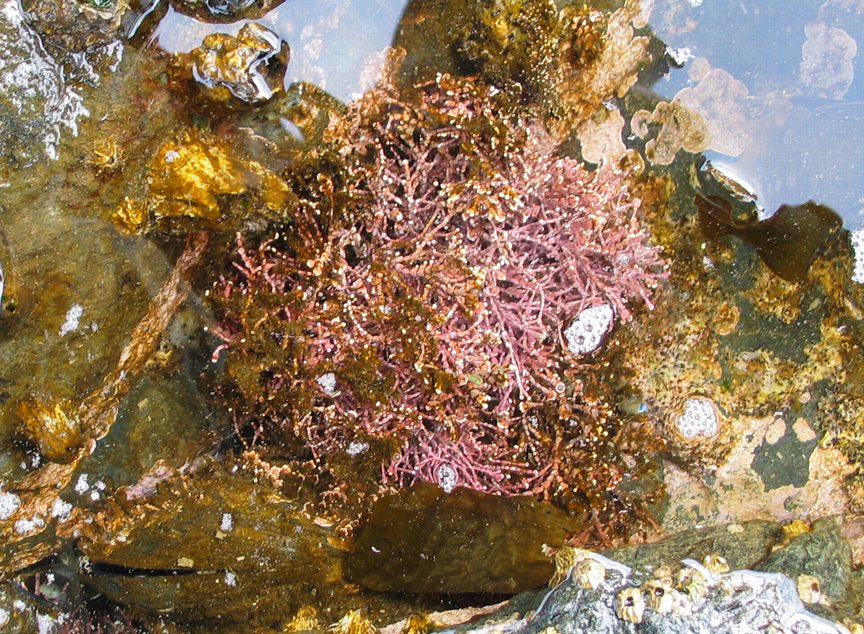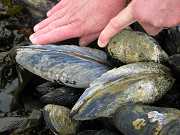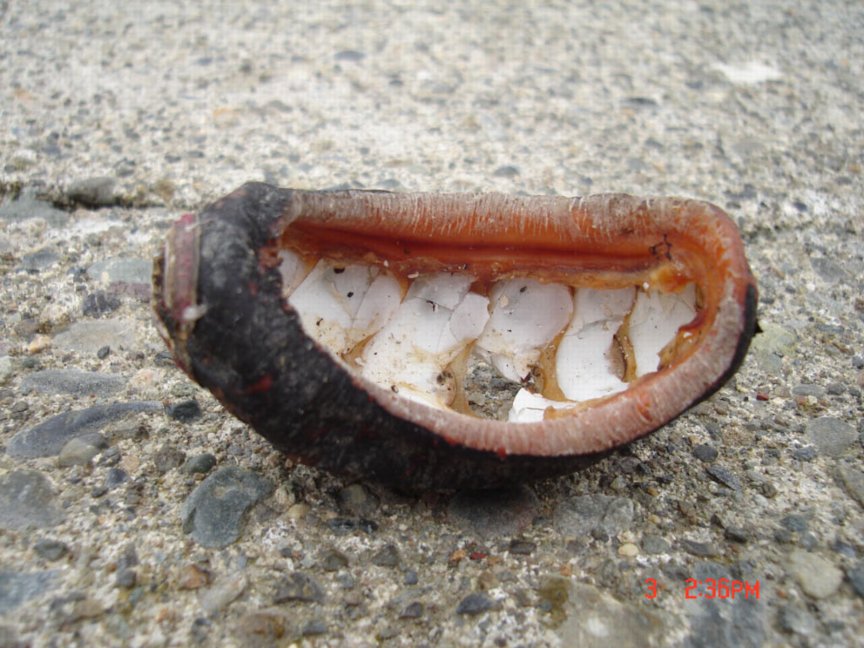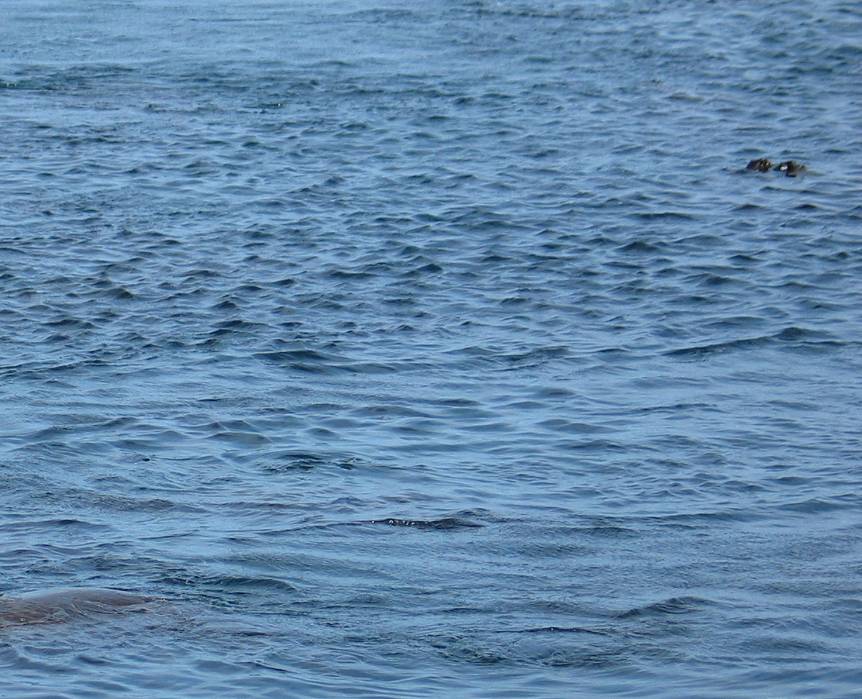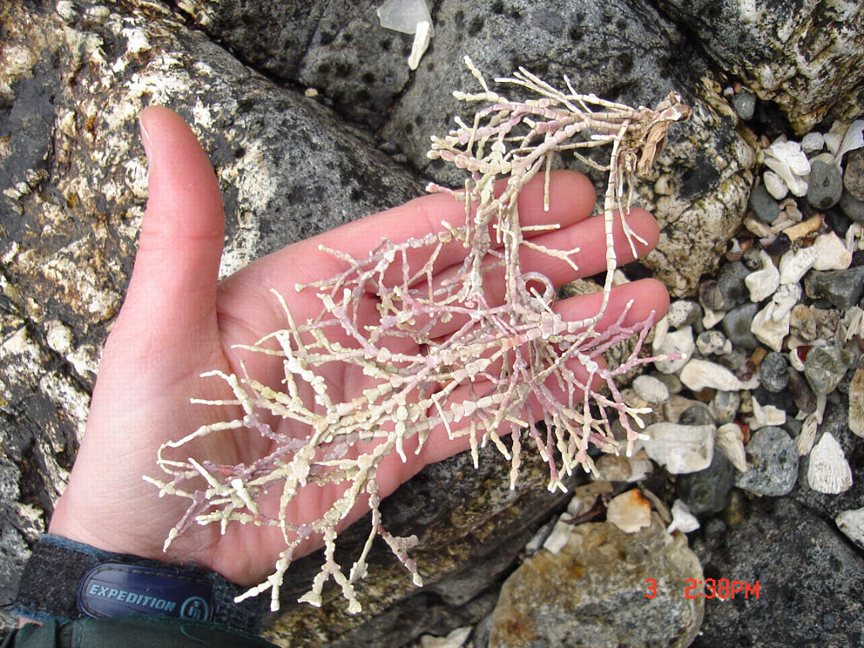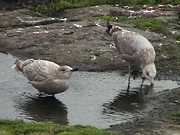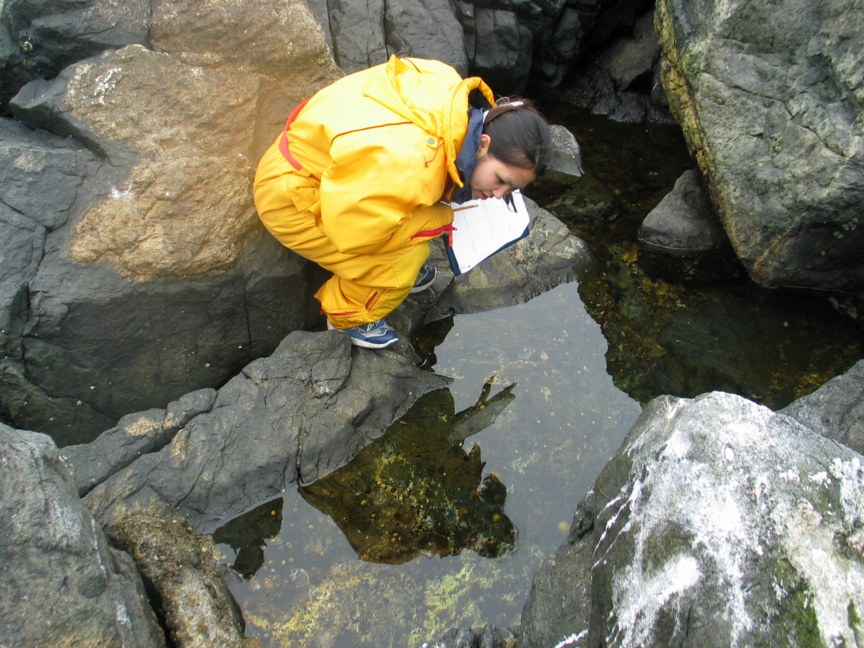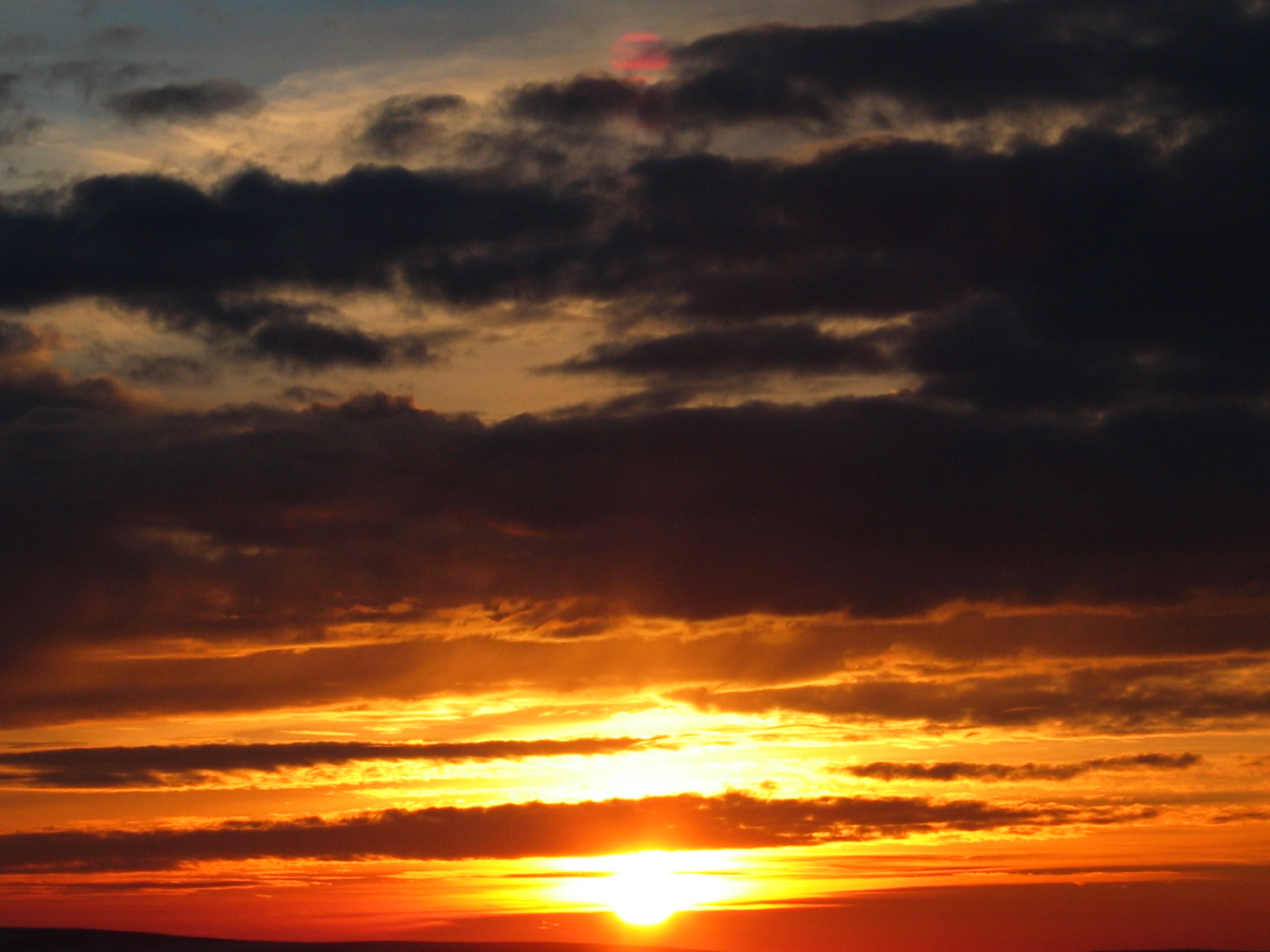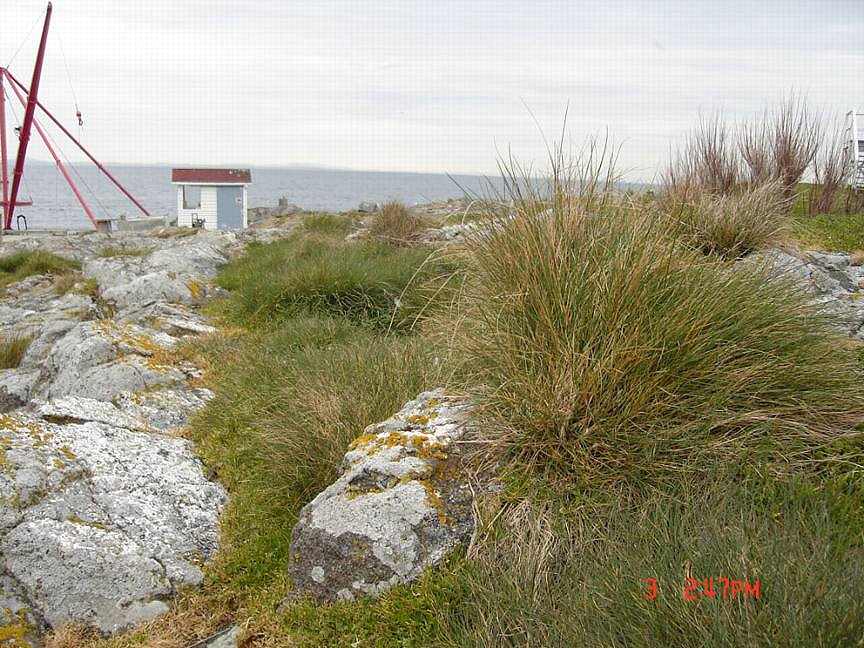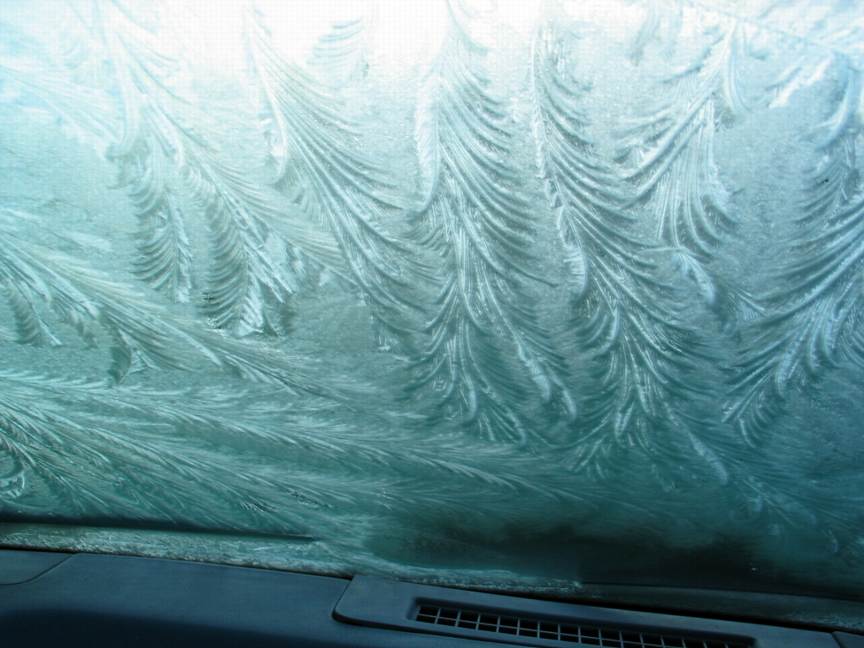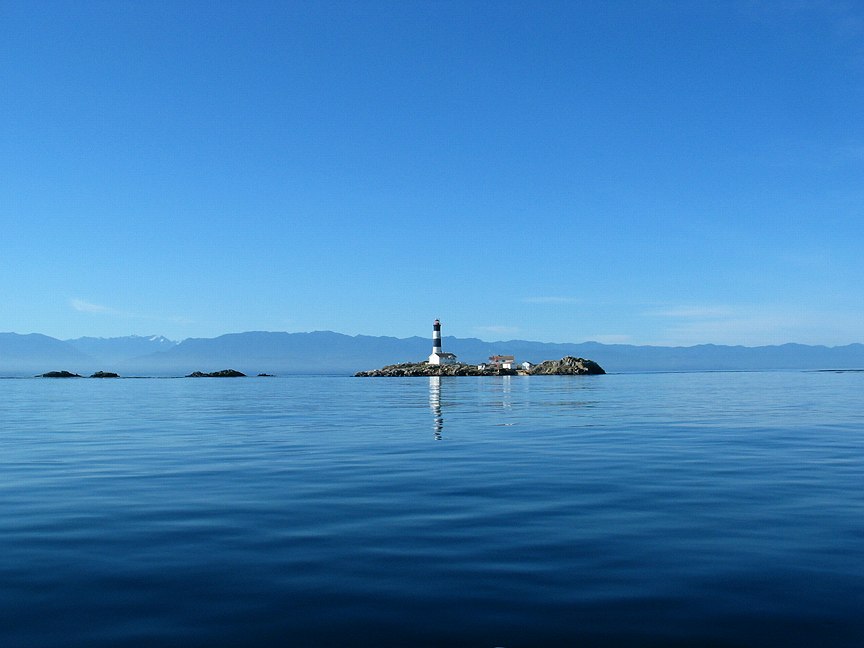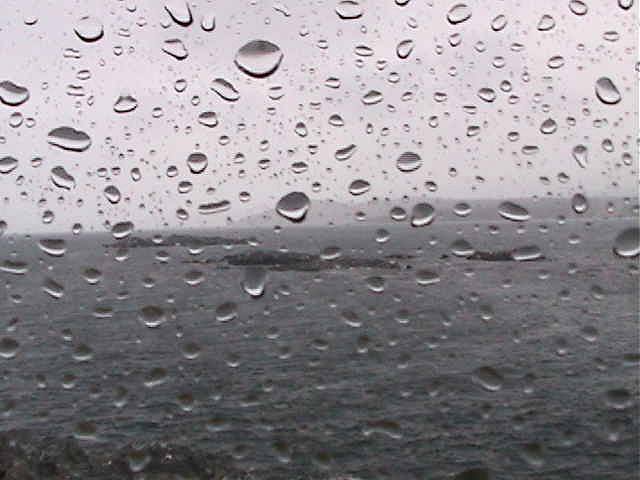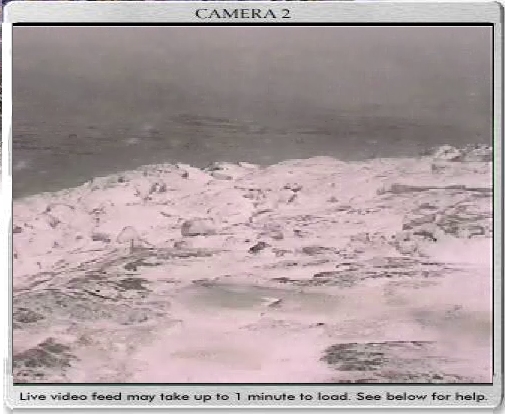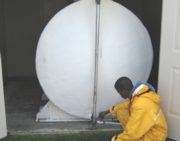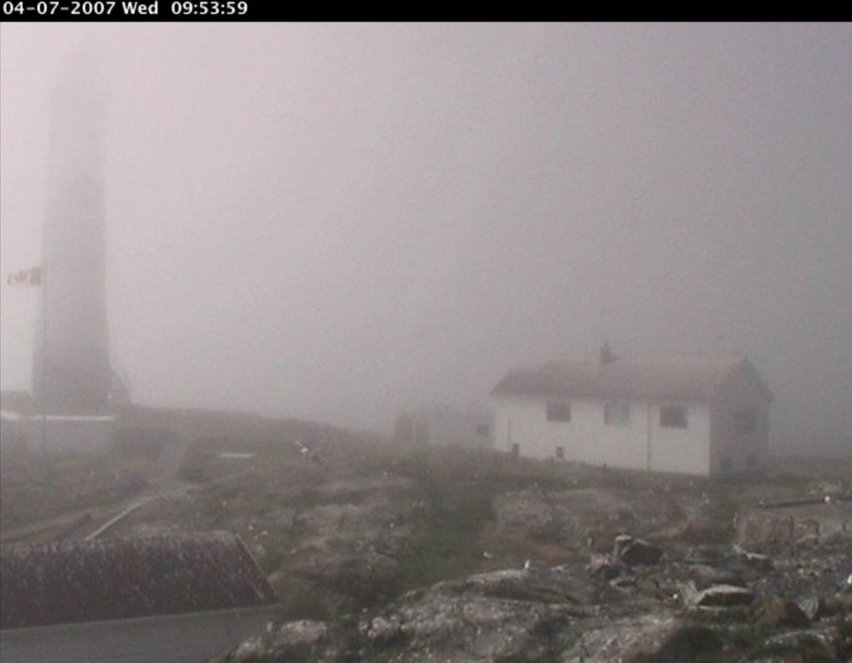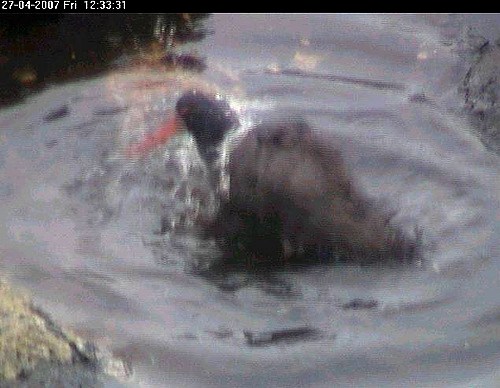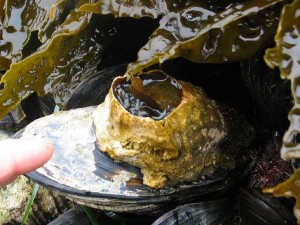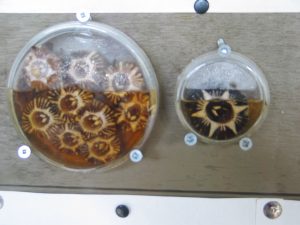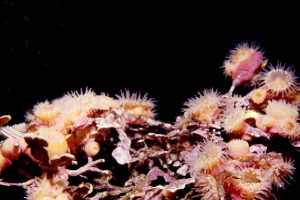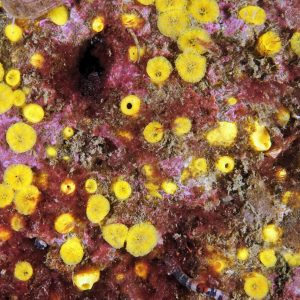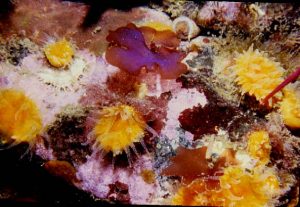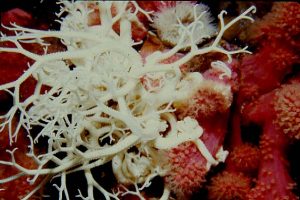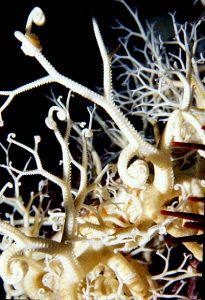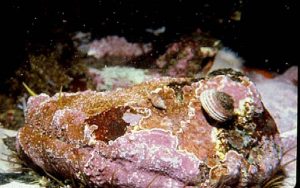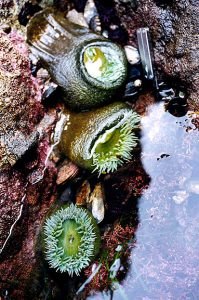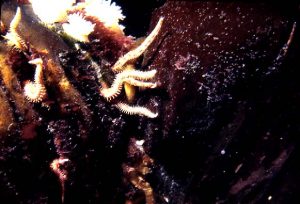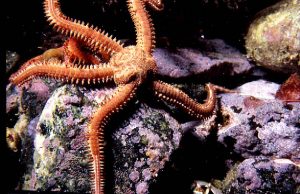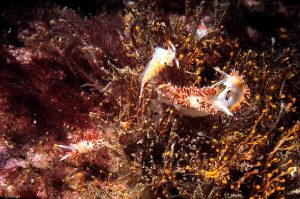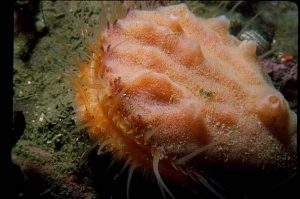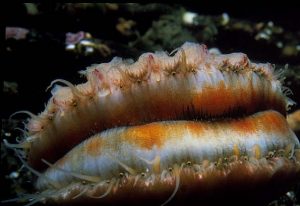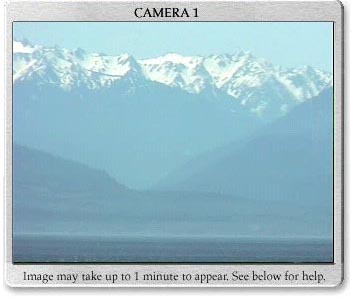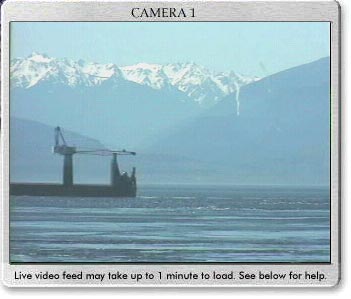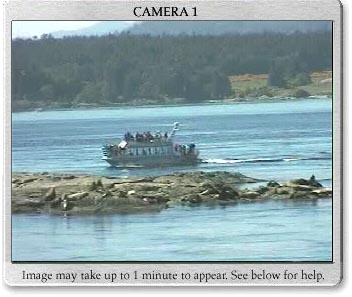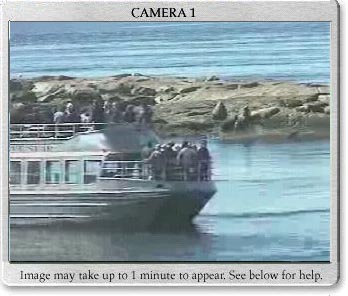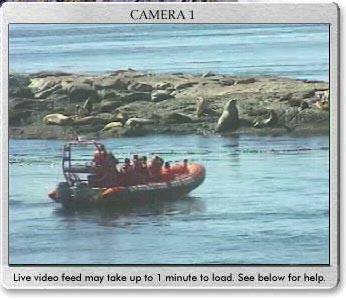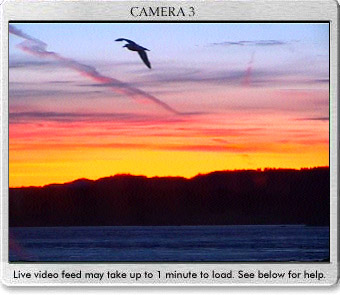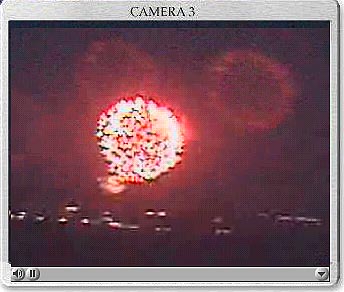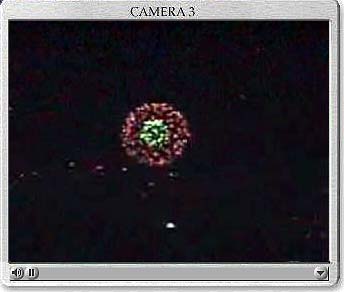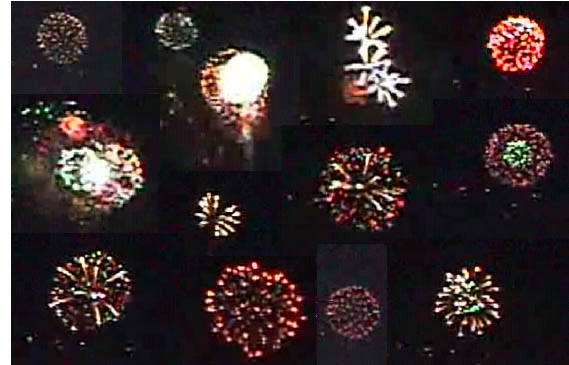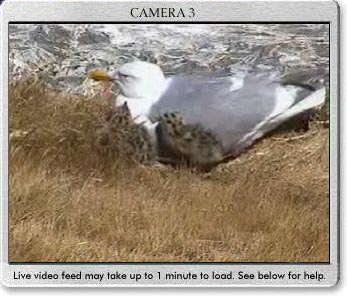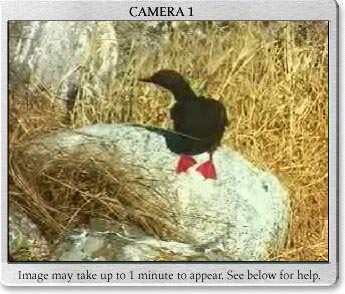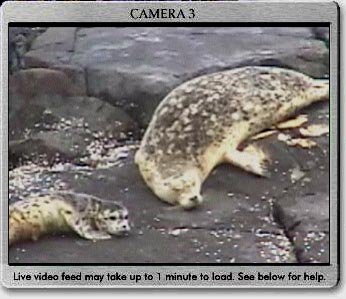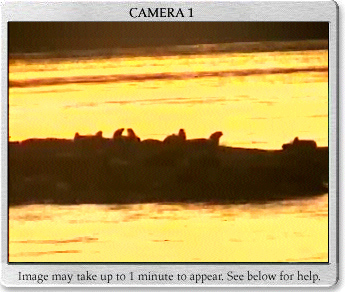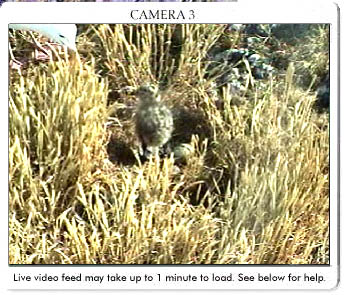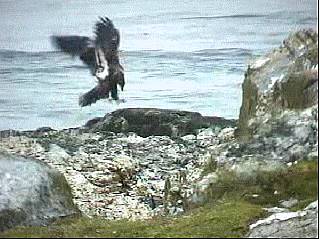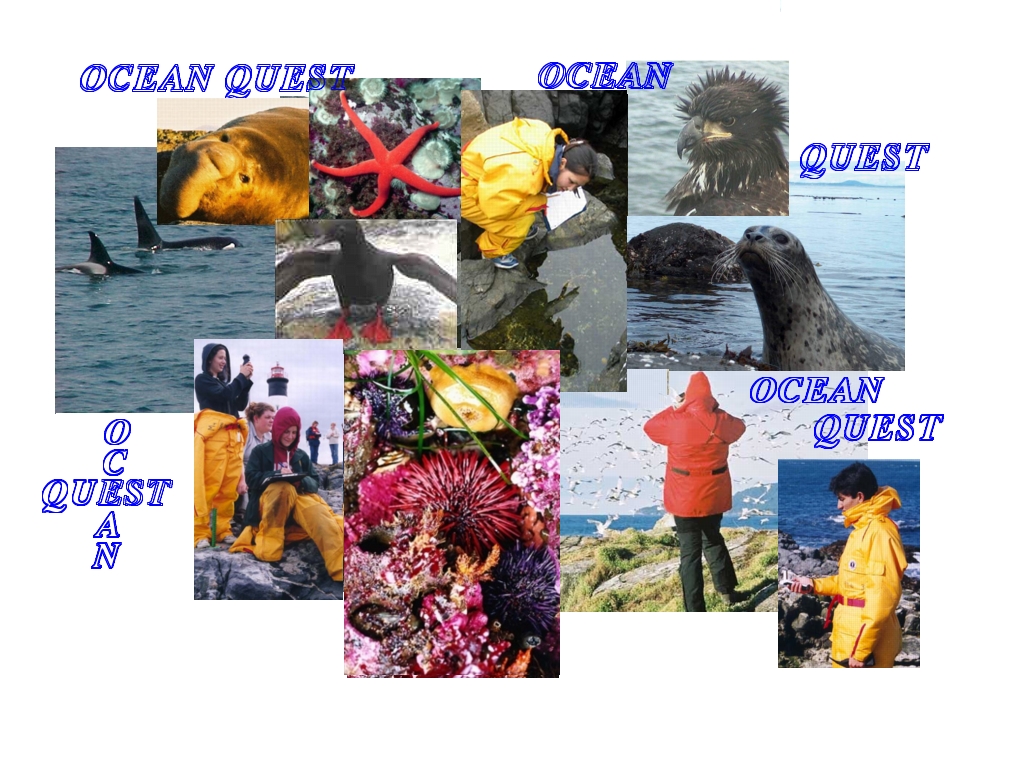ECOLOGICAL REGION
#21 COLUMBIAN PACIFIC.UTM— to —-?(The Columbian Pacific region stretches along the Pacific coast from Cape Mendocino in the South, northward to include the Straight of Juan de Fuca and end at northern tip ofVancouver Island, in the North. The region is home to abundant plant and wildlife, but also has one of the fastest growing human populations in North America. )
|
|
|
|
|
A. Estuarine regime
|
| A.01 Estuarine lagoon formation |
| A.01.WWatercolumn zone |
|
| A.01.BBenthic zone |
| Epibenthic subzone |
|
| Subbenthic subzone |
|
|
| A.01.LLittoral zone |
| Supratidal subzone |
| Backshore lagoon flats macrohabitat |
Biotope: Phragmites, cattail, reed canary grass |
| drainage channels macrohabitat |
Biotope: stickleback, cutthroat trout |
|
| Intertidal subzone |
| salt marsh macrohabitat |
Biotope: Distychlis, Salicornia |
| salt pans macrohabitat |
Biotope: acorn barnacle, |
| mud flat macrohabitat |
Biotope: wading birds, |
| drainage channels macrohabitat |
Biotope: iron bacteria, |
|
| Infratidal subzone |
|
|
|
| A.02Estuarine embayment formation |
| A.02.B bottom zone |
|
| A.02.L littoral zone |
|
| A.02.W water column zone |
|
|
| A.03 Estuarine Shoreline Formation |
A.03.L
Estuarine littoral shore zone
|
| A.03.L.a estuarine shore unconsolidated sediments macrohabitat |
|
| A.03.L.b Estuarine shore unconsolidated sediments macrohabitat |
|
| A.03.L.f Estuarine shore water column macrohabitat |
|
|
|
|
|
B.Freshwater-influenced regime
|
|
|
|
| C.03 Marine Shoreline Formation |
| Benthic zone |
|
|
| littoral zone |
| Supratidal |
| Intertidal |
| Infratidal |
|
|
| water column zone |
| Upper Water Column layer |
| Pycnocline layer |
| Bottom Water Column layer |
|
|
|
| C.05 Nearshore Island formation |
| C.05.B Benthic or bottom zone |
| C.05.B.01Epibenthic subzone |
| C.05.B.01aunder water– cliff face macrohabitat |
Biotope: basket star, Gersemia rubriformis (soft pink coral) hydroids (see reference .. 65 species),Gorgonocephalus eucnemis (basket star), |
| C.05.B.01btumbling rock macrohabitat |
Biotope: Nereocystis luetkeana (bull kelp), Pterygophora californica (Stalked kelp), Calliostoma (top shell), Solaster stimpsoni( stripped sunstar), Pycnopodia helianthoides (sunflower star) Henricia leviuscula (blood star).Cucumaria miniata (orange sea cucumber), Metridium farcimen (Giant plumose anemone) Enteroctopus dofleini (Giant Pacific Octopus), Ophiothrix spiculata (brittle star) |
| C.05.B.01chorizontal current channel macrohabitat |
Biotope:Cystodytes lobatus (lobed compound tunicate), Ascidians, Isodictya rigida finger sponges, Mycale toparoki (yellow sponge), Aglaophenia latirostris (ostrich plume hydroids) Tubularia regalis (regal pink mouth hydroid ) also other hydroid species |
| C.05.B.01dshell fragment bottom macrohabitat |
Biotope: Oligocottus maculosus (sculpin),Opalia chacei (Chace’s wentletrap) |
| C.05.B.01ebare rock substrate macrohabitat |
Biotope: Lithothamnion sp. (encrusting pink algae), Dodecaceria concharum (coralline fringed tube worm) , Cucumaria pseudocurata (Tar Spot Sea Cucumber) |
|
| C.05.B.02Subbenthic subzone |
| C.05.B.02.ashell -fragment macrohabitat |
Biotope: Ptilosarcus (Sea Pen),Opalia chacei (Chace’s wentletrap) |
| C.05.B.02.bgravel, sand macrohabitat |
Biotope:Myxicola infundibulum jelly tube |
C.05.B.02.c
mud macrohabitat |
Biotope: none available |
|
|
| C.05.Llittoral zone.. |
| C.05.L.01Supratidal subzone |
| C.05.L.01.arock cliff and boulder habitat |
| Biotope:, Cepphus columba (pigeon Guillemot) and Phalacrocorax pelagicus (pelagic cormorant )nesting, Phalacrocorax penicilatu, (Brandt’s Cormorant) and Larus thayeri (Thayer’s gull) overwintering. |
| Biotope:Romanzoffia (mist maidens) Plantago, |
|
| C.05.L.01.bupper island rock plateau habitat |
| Biotope: thrift, Larus glaucescens (Glaucous-winged Gull) nesting, Phalacrocorax auritas, (double-breasted cormorant- winter resident), Haliacetus leucocepfalus ( bald eagle), Falco peregrinus (peregrine falcon) Corvus caurinus (North-western Crow) Corvus corax, (Raven–winter) |
| Biotope: Haulout for the following marine mammals: Harbour seal, Mirounga angustirostris (elephant seal), Zalophus californianus (California sea lion), Eumetopias jubatus (northern sea lion), Phoca vitulina Harbour seal. |
|
| C.05.L.01.cupper spray Zone rock and gravel habitat |
| Biotope: Caloplaca verruculifera (orange lichen), Xanthorea candelaria (orange lichen) Lecanora straminea (grey lichen) Prasiola meridionalis (uppermost green algae |
| Neomolgus littoralis (red velvet mite) |
| Biotope: Haematopus bachmani (Black-Oystercatcher nesting), Arenaria melanocephala (Black turnstone) |
|
| C.05.L.01.dinner island grassed plain habitat |
Biotope: Native fescue grasses, several flower garden escapes,
and introduced brome and orchard grass, Branta canadensis (Canada goose) nesting, |
| C.05.L.01.eBrackish pools in spray zone |
Biotope: Pyramimonas (green water pool )
|
|
| C.05.L.02Intertidal subzone |
C.05.L.02.a Rocky
shoreline….. macrohabitat |
| High energy intertidal boulders and loose rock sub-habitat |
Biotope: Hemigrapsus nudus (Purple shore crab), |
| High energy intertidal high elevation tidepool sub- habitat |
Biotope: Harpacticoid, Littorina sitkana and Littorina scutulata (littorine snails, isopod |
| High energy intertidal low elevation tidepool sub- habitat |
Biotope: low level pool: Phyllospadix scouleri (surfgrass) Strongylocentrotus purpuratus (purple urchin), Oligocottus maculosus (tidepool sculpin) Anthopleura xanthogrammica (Giant green anemone) |
| High energy intertidal solid substrate subhabitat |
Biotope: Porphyra, Halosaccion, Chthamalus sp.(barnacle) Neomolgus (red mite) |
| High energy/high current solid substrate habitat |
Biotope: Mytilus californianus, (California mussel), Anthopleura elegantissima ( small intertidal anemone, Endocladia muricata (red algae) Chthamalus (barnacle) Pollicipes polymerus (goose-necked barnacle) |
| Low energy solid substrate habitat |
Biotope: Alaria marginata (short stipe algae), Eudistylia vancouveri (feather duster worm) Mopalia mucosa (mossy chiton) |
| Surge Channel habitat |
Biotope: Polycepes polymerus (Goose-neck barnacles):Anthopleura xanthogramica (large intertidal anemone) |
| Intertidal reef habitat |
Biotope: Mytilus californianus ( mussel), Phyllospadix scoulleri (surf grass) |
| Anthropomorphic (human modified) structure:concrete dock. |
Chthamalus( barnacle), Ulva (green algae) |
|
| C.05.L.02.bHigh energy bay macrohabitat |
| Shell beach habitat |
Biotope: |
| sand beach habitat |
Biotope: |
| cobble beach habitat |
Biotope: |
|
| C.05.L.02.c.Low energy bay macrohabitat |
| Shell beach habitat |
Biotope: |
| sand beach habitat |
Biotope: |
| cobble beach habitat |
Biotope: |
|
| C.05.L.02.d High energy beach macrohabitat |
| Shell beach habitat |
Biotope: |
| sand beach habitat |
Biotope: |
| cobble beach habitat |
Biotope: |
|
| C.05.L.02.eLow energy beach macrohabitat |
| Shell beach habitat |
Biotope: |
| sand beach habitat |
Biotope: |
| cobble beach habitat |
Biotope: |
|
|
| C.05.L.03Infratidal subzone
Depth to 10 meters affected by tidal surge |
| C.05.L.03.asolid substrate macrohabitat |
| 10 meter depth habitat |
Biotope: Nereocystis (bull kelp), Membranipora serrilamella (bryozoa) Epiactis prolifera (brooding anemone), Urticina crassicornis (Fish eating anemone) |
| 5-10 meter depth habitat |
Biotope: Pterygophora californica (perennial algae) |
| 0-5 meter depth habitat |
Biotope:Laminaria groenlandica (Brown Algae), Ophlitaspongia pennata (velvety red sponge), Calliostoma ligatum (Blue top snail) |
|
| C.05.L.03.bTumbling rock macrohabitat |
| 10 meter habitat |
Biotope: Strongylocentrotus (red urchin), Cucumaria miniata (sea cucumber) |
| 5-10 meter depth habitat |
Biotope:Strongyocentrotus purpuratus (purple urchin), Cucumaria miniata (orange sea cucumber), Strongylocentrotus droebachiensis( green urchin) |
| 0-5 meter depth habitat |
Biotope: (leather chiton, limpet species, northern abalone. |
|
| C.05.L.03.c Shell fragment gravel pockets macro habitat |
| 10 meter habitat |
Biotope:swimming scallop, Opalia (chalces wentletrap) |
| 5-10 meter depth habitat |
Biotope: sculpin |
| 0-5 meter depth habitat |
Biotope: Surf grass, abalone, Laminaria saccharina
(brown algae) |
|
|
|
| C.05.Wwater column zone |
| C.05.W.01 and Upper Water Column layer subzone |
| Biotope: phytoplankton, zoooplankton,(krill), |
| Biotope: salmon species, black rockfish, herring. |
|
| C.05.W.02Pycnocline layer subzone |
| Biotope: none established: |
|
| C.05.W.03Bottom Water Column layer subzone |
| Biotope: Planktonic |
| Biotope:Hexagrammos decagrammus (kelp greenling), Sebastes nigrocinctus (tiger rockfish, china rockfish), Scorpaenichthyes marmoratus (cabezon), Ophiodon elongatus (ling cod), |
|
| C.05.W.04 Surface and diving depth subzone |
| Biotope: Orcinus Orca (killer whale) |
Biotope: Histrionicus histrionicus Harlquin Duck, Larus glaucescen (Glaucous-winged gull), Cepphus columba (Pigeon Guillemot), Phalacrocorax pelagicus (Pelagic Cormorant)
|
|
|
|
|
|
|
|
|
D
Neritic regime |
|
|
E
Oceanic regime
|
|
|
|
From the NatureServe website, a brief description of the BIOTOPE:
The finest level of the classification is the Biotope. The biotope is a specific area of a habitat that
includes recurring, persistent, and predictable biological associations. The biological associations can
include plants, attached sessile fauna and unattached but relatively non-motile fauna and bacterial
colonies. A biotope is environmentally uniform in structure, environment, and is defined by the dominant
biota. The primary characteristic of the biotope is the relationship between the physical habitat and a
strongly associated or fixed “high fidelity” plant and animal species. “Fixed” is defined as an individual
organism that cannot move beyond the frame of reference of the habitat boundary within one day.
Epibenthic,( on the surface of the ocean bottom) organisms like anemones, sponges, hydroids, and benthic infauna (buried in the bottom sediments) such as polychaetes would be considered part of a biotope complex.While much of the sedentary or fixed biota defines a particular biotope, other organisms demonstrate less
fidelity to any specific biotope. More motile or vagile organisms can be associated with multiple biotopes or
interact with the physical structure of the environment at any number of classification levels and spatial or
temporal scales. Larger animals, such as blue whales, may interact with elements defined in the
classification at a level of Formations, such as the shelf break or submarine canyon. Smaller animals
interact with Macrohabitats, Habitats or Biotopes. As the classification matures, the linkages of species and biological
associations to different classification units at different levels will become better known and documented.Detailed Description and Rationale
The biotope concept has been employed for several years in Europe and is defined as the “physical
habitat… and its community of animals and plants (Costello, 2003).” This refers to the dominant
biological inhabitant(s) of a specific habitat, whether the species are “diagnostic,” as in the terminology of
Cowardin (1979) and Dethier (1990), or if they are “commonly associated.” A species is considered to be
part of a biotope if it is conspicuous, dominant, and physically linked to the habitat. The concept and
nomenclature for the biotope follow the BioMar system (Costello, 2003; Connor, 1997), which has been
integrated into the EUNIS classification for European habitats (Davies and Moss 1999) and into this
classification, although some of the terminology has been changed here. |




